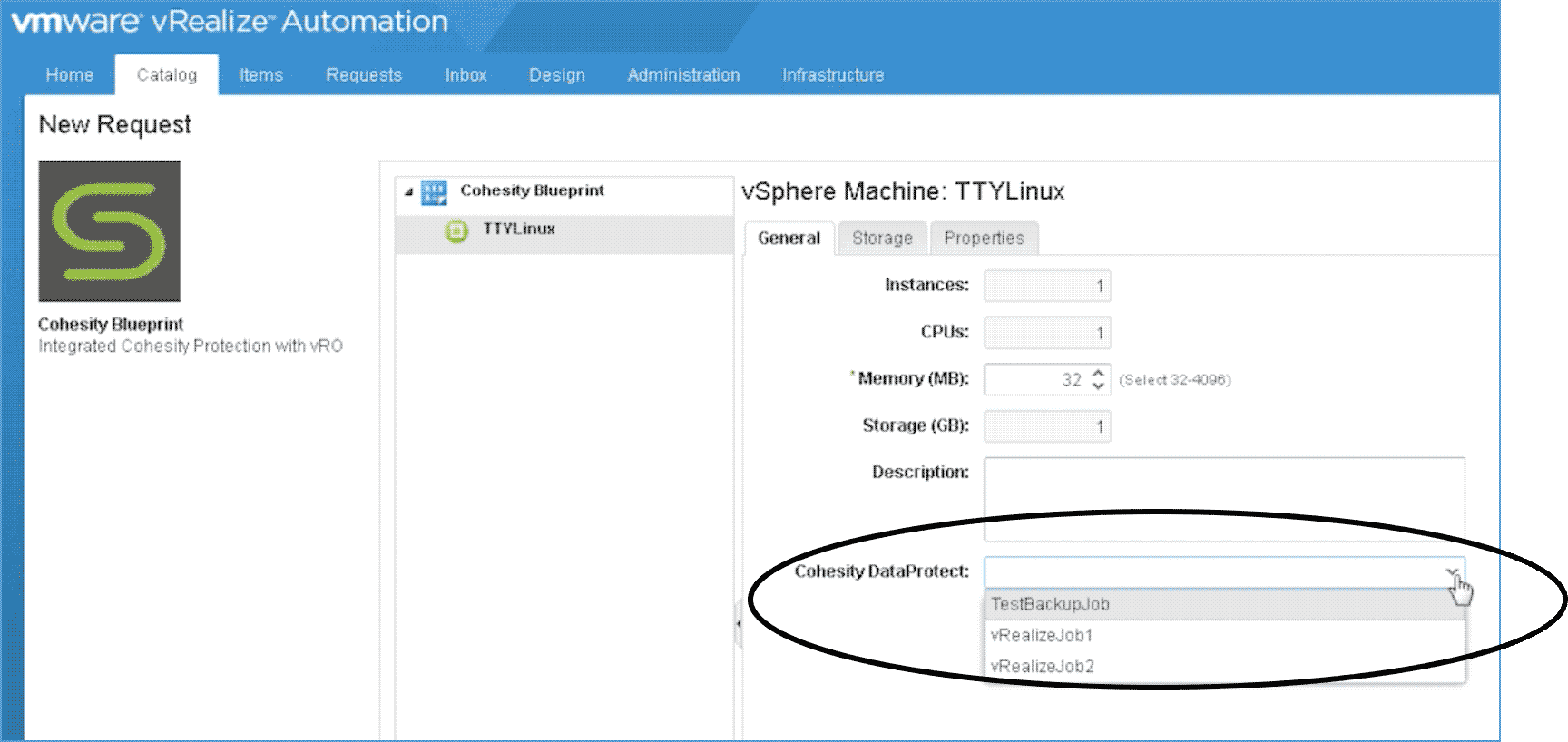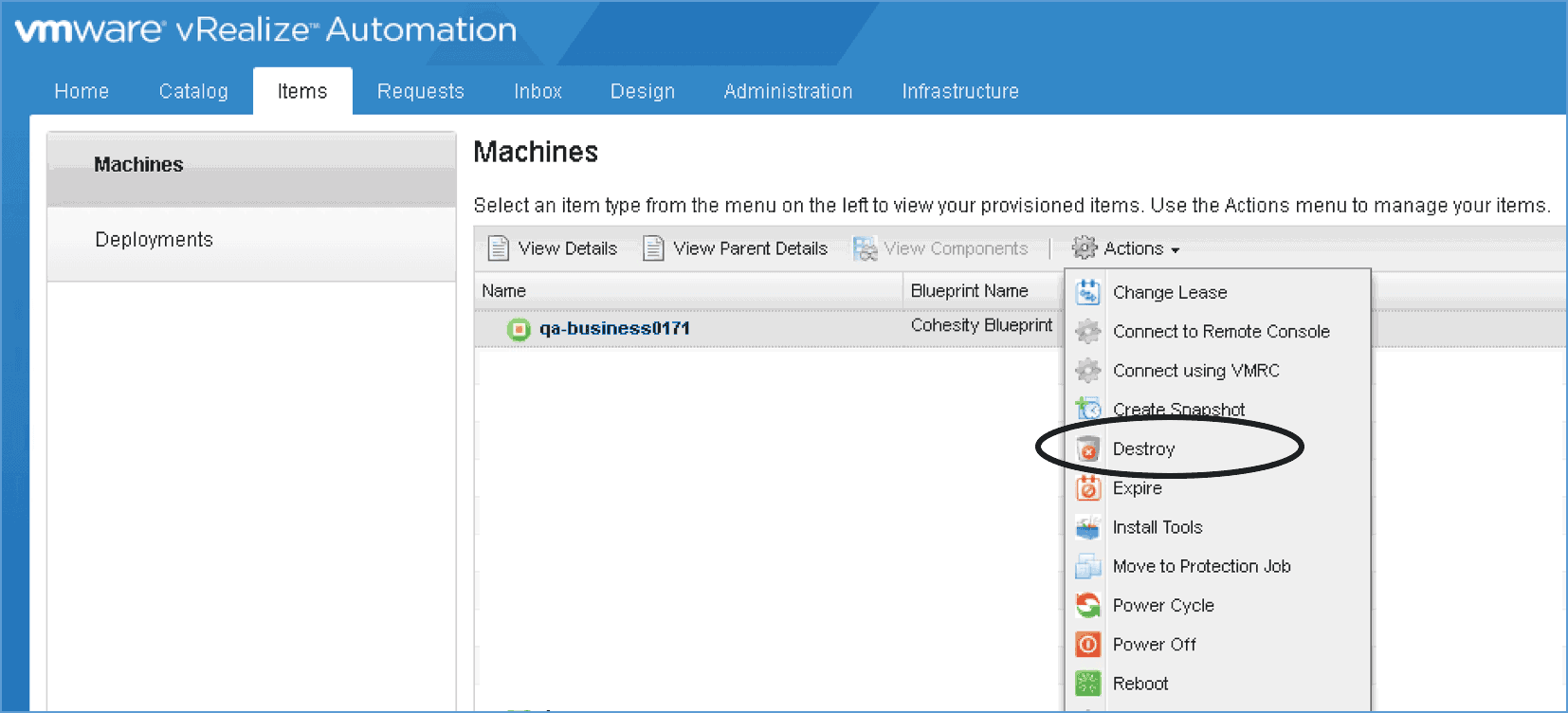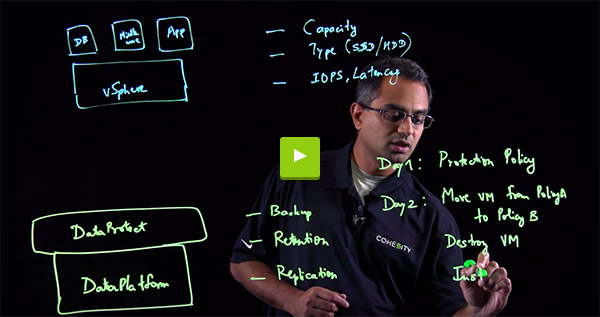With the multitude of products and technologies in today’s datacenter, it is becoming more and more imperative for customers to automate the delivery and ongoing management of infrastructure components. This blog is focused on how Cohesity and vRealize Automation enable this customer objective.
VMware vRealize Automation (vRA) is a management platform that broadly addresses three aspects for VMware infrastructure:
– First, enterprises go through provisioning of VMs on a regular basis. This is considered a Day 1 activity in regards to the life of a VM. Day 1 activity of VM deployments is done through standardized blueprints with vRealize.
– Second, organizations are looking for a self-service interface for users to perform tasks on an ongoing basis as well, referred to as Day 2 operations. vRA provides the ability to respond to requests for ongoing management of provisioned resources.
– Third, vSphere VM Storage Policy based Management (SPBM) can be integrated with vRA service catalog to provide workload optimization through established policies. By defining standard storage profiles, SPBM optimizes the virtual machine provisioning process at scale and eliminates the need to provision virtual machines on a case-by-case basis.
Policies related to primary storage can be aspects such as performance, IOPS, availability. Cohesity complements SPBM by leveraging VMware VADP APIs to include data protection for provisioned VMs. Elements such as backup, retention, and replication can be tightly coupled with Virtual Machine blueprints. Let me give you a flavor of the integration possibilities with three Cohesity workflows in vRA.
Add Cohesity DataProtect during VM deployment: By leveraging Cohesity APIs into vRealize Orchestrator, blueprints are automatically presented with a list of all the available Cohesity Protection Jobs (Fig 1).
Move VM from one Cohesity Protection Job to another: Data protection requirements can change during the lifecycle of a VM. So it becomes necessary to move a VM from one Cohesity Protection Job to another. vRealize Orchestrator (vRO) integration pulls the list of available jobs the VM can be moved to (Fig 2).
Figure 2: Workflow schema to remove VM from one Cohesity Protection Job to another
Destroy VM: This completes the lifecycle in the VM’s evolution; the VM gets removed from vCenter and also from the Cohesity Job (Fig 3).
Figure 3: Destroying VM also removes VM from associated Cohesity Protection Job
So there you have it. Storage Policy based management from VMware coupled with REST API integration of Cohesity to handle Data protection of virtual infrastructure through vRealize Automation.























